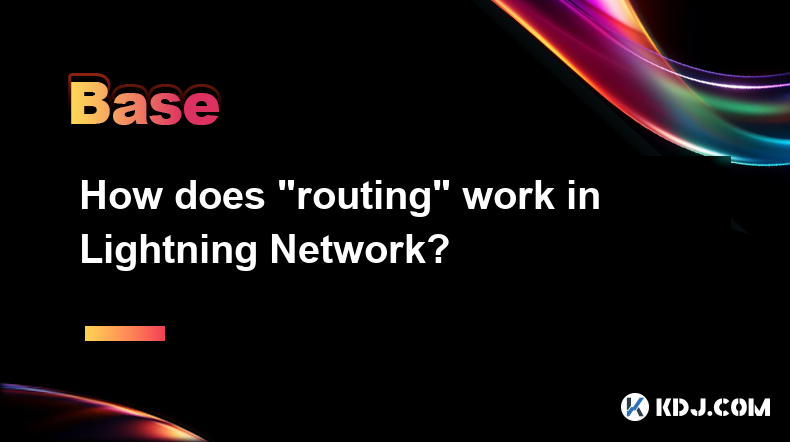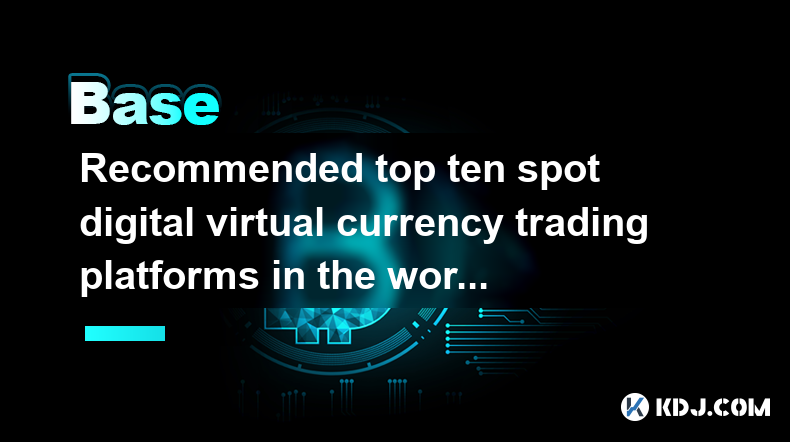-
 Bitcoin
Bitcoin $87,160.3686
2.59% -
 Ethereum
Ethereum $1,577.5291
-0.58% -
 Tether USDt
Tether USDt $1.0000
0.00% -
 XRP
XRP $2.0804
0.22% -
 BNB
BNB $596.3334
0.99% -
 Solana
Solana $136.5658
-0.15% -
 USDC
USDC $1.0000
0.00% -
 Dogecoin
Dogecoin $0.1584
1.77% -
 TRON
TRON $0.2458
-0.32% -
 Cardano
Cardano $0.6208
0.05% -
 Chainlink
Chainlink $13.1006
-1.96% -
 UNUS SED LEO
UNUS SED LEO $9.1412
-1.97% -
 Avalanche
Avalanche $19.9880
2.50% -
 Stellar
Stellar $0.2528
3.56% -
 Shiba Inu
Shiba Inu $0.0...01238
-0.19% -
 Toncoin
Toncoin $2.8930
-3.79% -
 Sui
Sui $2.2031
4.44% -
 Hedera
Hedera $0.1692
1.25% -
 Bitcoin Cash
Bitcoin Cash $343.2002
2.28% -
 Polkadot
Polkadot $3.8296
-1.99% -
 Hyperliquid
Hyperliquid $17.9378
1.39% -
 Litecoin
Litecoin $78.0777
0.75% -
 Dai
Dai $0.9999
0.00% -
 Bitget Token
Bitget Token $4.4322
0.90% -
 Ethena USDe
Ethena USDe $0.9993
0.00% -
 Pi
Pi $0.6347
-0.88% -
 Monero
Monero $214.7110
-0.08% -
 Uniswap
Uniswap $5.2643
-0.22% -
 Pepe
Pepe $0.0...07787
2.99% -
 Aptos
Aptos $4.9970
-0.84%
How does "routing" work in Lightning Network?
Lightning Network routing uses payment channels & algorithms to find optimal, low-fee paths. Payment splitting & onion routing enhance privacy, while node operators earn fees. Channel management is vital for network health.
Mar 24, 2025 at 11:49 pm

Key Points:
- Lightning Network routing relies on a network of payment channels between participants.
- Route selection involves finding a path with sufficient capacity and low fees.
- Payment splitting and onion routing enhance privacy and security.
- Node operators earn fees for facilitating payments.
- Channel management is crucial for network health and individual participation.
How Does "Routing" Work in Lightning Network?
The Lightning Network (LN) is a layer-2 scaling solution for Bitcoin designed to enable near-instantaneous and low-fee transactions. Its functionality hinges on efficient routing of payments across a network of interconnected nodes. Unlike on-chain Bitcoin transactions, LN transactions occur off-chain, significantly increasing transaction speed and reducing network congestion. Understanding how routing works is key to grasping the LN's power.
The core of LN routing is the payment channel. Two participants open a channel, locking funds in a multi-signature escrow. Transactions within this channel are then settled off-chain, only requiring on-chain confirmation when the channel is closed. This significantly reduces the load on the Bitcoin blockchain. Multiple channels create a network, allowing payments to traverse multiple nodes to reach their destination.
When a payment is initiated, the payer's node uses a routing algorithm to find a path through the network. This algorithm considers several factors, including channel capacity (the amount of funds available in each channel), fee rates charged by each node, and the reliability of each node's connection. The goal is to find the optimal route—the fastest and cheapest path—to the recipient. This process happens nearly instantaneously.
Once a path is selected, the payment is broken down into smaller amounts and sent along the chosen route. This is known as payment splitting, improving efficiency and resilience. Onion routing is also employed to enhance privacy, obscuring the payment path from intermediary nodes. Each hop only knows the next hop in the route, protecting the sender's and receiver's identities.
Each node along the payment path receives a small fee for its service. These fees are crucial for incentivizing node operators to participate in the network and maintain its liquidity. The fees are generally much lower than Bitcoin transaction fees on the main chain. The overall fee paid by the sender is the sum of the fees charged by each node along the route.
Maintaining and managing payment channels is essential for both individual users and the overall health of the Lightning Network. Channels require regular funding and potentially need to be closed and reopened periodically. This management aspect introduces some complexity, but it's a critical component of the system's functionality. The efficiency of the routing process is directly influenced by the number of active channels and their capacity.
A crucial aspect of LN routing is its reliance on algorithms that efficiently navigate the complex network of channels. These algorithms must balance speed, cost, and reliability to ensure successful payments. The choice of routing algorithm can significantly impact the user experience. Several different routing algorithms are under constant development and refinement.
How does the Lightning Network handle failures?
If a node along the payment path fails or becomes unavailable, the payment might fail. The routing algorithm attempts to find alternative paths if possible. However, if no alternative path exists, the payment will be unsuccessful. Payment splitting mitigates the risk of total loss, as only parts of the payment might be lost in case of a failure. Payment attempts are often retried multiple times to improve chances of success.
What are the limitations of Lightning Network routing?
One limitation is the network's reliance on node operators. Malicious or failing nodes can disrupt payments. The network's topology also impacts routing efficiency. A less connected network leads to fewer possible routes, increasing the chances of failure or higher fees. Furthermore, the initial setup of channels requires some technical knowledge and involves a degree of trust between the channel participants.
What is the role of channel capacity in routing?
Channel capacity dictates the maximum amount of funds that can be routed through a particular channel. If a payment exceeds the capacity of any channel along the route, the payment will fail. Therefore, channels with higher capacities are preferred as they allow for larger payments and improve overall network throughput. The algorithm prioritizes channels with sufficient capacity.
How does the Lightning Network ensure privacy?
The use of onion routing significantly enhances privacy. Each node only sees the next hop in the route, concealing the full payment path from any single node. Furthermore, the small amounts used in payment splitting further obfuscate the actual payment size. However, it is important to note that while the LN enhances privacy, it is not perfectly anonymous. Some information, like the total amount sent, might still be inferable with sufficient observation.
How are fees determined in Lightning Network routing?
Node operators set their own fee rates, usually expressed as a percentage of the payment or a fixed amount per milli-satoshi. The routing algorithm takes these fees into account when selecting a path. The overall fee paid by the sender is the sum of the fees charged by each node along the route. Competition among nodes helps to keep fees relatively low, but the fees are still dependent on network congestion and the availability of channels.
What technologies are used for Lightning Network routing?
Lightning Network routing uses a combination of cryptographic techniques, such as multi-signature escrow and onion routing, to ensure security and privacy. Sophisticated routing algorithms are also employed to find efficient payment paths. These algorithms consider various factors, including channel capacity, fees, and the reliability of the nodes. The underlying infrastructure utilizes the Bitcoin blockchain for channel settlements.
Disclaimer:info@kdj.com
The information provided is not trading advice. kdj.com does not assume any responsibility for any investments made based on the information provided in this article. Cryptocurrencies are highly volatile and it is highly recommended that you invest with caution after thorough research!
If you believe that the content used on this website infringes your copyright, please contact us immediately (info@kdj.com) and we will delete it promptly.
- Lightchain AI: The Future of Cryptocurrency
- 2025-04-22 05:30:13
- Coinbase Expands XRP Futures Contracts Trading
- 2025-04-22 05:30:13
- Difficulty Spike and Hashrate Drop Lengthen Block Times
- 2025-04-22 05:25:13
- Despite the Harshest Profit Squeeze in Half a Decade, Bitcoin Mining on U.S. Soil is Consolidating and Gathering Momentum
- 2025-04-22 05:25:13
- Bitcoin (BTC) markets ticked higher
- 2025-04-22 05:20:13
- Shiba Inu (SHIB) and Lightchain AI (LCAI) Are Rapidly Gaining Ground, Positioning Themselves as Serious Competitors to Dogecoin.
- 2025-04-22 05:20:13
Related knowledge

What are the formal digital currency trading apps? What are the BTC exchange apps?
Apr 22,2025 at 03:28am
Regular BTC trading app 1. Binance Binance is a world-renowned digital currency trading platform, providing powerful APPs and excellent user experience. Its main features include: Rich trading pairs : Binance supports over 500 cryptocurrencies and thousands of trading pairs, and users can easily find the currency they want to trade. High security : Bina...

Recommended top ten spot digital virtual currency trading platforms in the world in 2025
Apr 21,2025 at 05:15pm
Recommended top ten spot digital virtual currency trading platforms in the world in 2025 1. Binance As the world's premier cryptocurrency trading platform, Binance is known for its extensive trading pairs and efficient trading services. Its features include: High Liquidity : Binance has huge trading volumes, ensuring users can trade at the best pric...

Ranking of top ten virtual currency trading apps in the currency circle (the latest authoritative list in 2025)
Apr 21,2025 at 10:28pm
The top ten virtual currency trading apps in the 2025 cryptocurrency circle are listed as follows: 1. Binance Binance is one of the world's leading cryptocurrency trading platforms, known for its efficient trading system and extensive currency support. Binance's user interface is designed with simplicity and is suitable for beginners and profess...

Introduction to the top ten digital currency trading app platforms in 2025
Apr 22,2025 at 03:49am
Introduction to the top ten digital currency trading app platforms in 2025 1. Binance Binance is one of the world's leading digital currency trading platforms, ranking first with its huge trading volume and extensive user base. Binance provides trading pairs of more than 500 cryptocurrencies, supporting a variety of trading methods such as spot trad...

The latest ranking of the top ten digital virtual currency trading platforms in 2025
Apr 22,2025 at 02:14am
The latest ranking of the top ten digital virtual currency trading platforms in 2025 1. Binance As the world's largest cryptocurrency trading platform, Binance has always maintained its leading position. The platform offers trading pairs in over 500 cryptocurrencies and supports multiple languages and payment methods. Its user-friendly interface i...

Which virtual currency app is better? Top ten cryptocurrency app trading platforms
Apr 22,2025 at 02:35am
Top 10 cryptocurrency trading application platforms recommended 1. Binance Binance is one of the world's leading cryptocurrency trading platforms, and is popular for its extensive currency support and efficient trading systems. Binance provides services including spot trading, futures trading, leveraged trading, etc., which meet the needs of differe...

What are the formal digital currency trading apps? What are the BTC exchange apps?
Apr 22,2025 at 03:28am
Regular BTC trading app 1. Binance Binance is a world-renowned digital currency trading platform, providing powerful APPs and excellent user experience. Its main features include: Rich trading pairs : Binance supports over 500 cryptocurrencies and thousands of trading pairs, and users can easily find the currency they want to trade. High security : Bina...

Recommended top ten spot digital virtual currency trading platforms in the world in 2025
Apr 21,2025 at 05:15pm
Recommended top ten spot digital virtual currency trading platforms in the world in 2025 1. Binance As the world's premier cryptocurrency trading platform, Binance is known for its extensive trading pairs and efficient trading services. Its features include: High Liquidity : Binance has huge trading volumes, ensuring users can trade at the best pric...

Ranking of top ten virtual currency trading apps in the currency circle (the latest authoritative list in 2025)
Apr 21,2025 at 10:28pm
The top ten virtual currency trading apps in the 2025 cryptocurrency circle are listed as follows: 1. Binance Binance is one of the world's leading cryptocurrency trading platforms, known for its efficient trading system and extensive currency support. Binance's user interface is designed with simplicity and is suitable for beginners and profess...

Introduction to the top ten digital currency trading app platforms in 2025
Apr 22,2025 at 03:49am
Introduction to the top ten digital currency trading app platforms in 2025 1. Binance Binance is one of the world's leading digital currency trading platforms, ranking first with its huge trading volume and extensive user base. Binance provides trading pairs of more than 500 cryptocurrencies, supporting a variety of trading methods such as spot trad...

The latest ranking of the top ten digital virtual currency trading platforms in 2025
Apr 22,2025 at 02:14am
The latest ranking of the top ten digital virtual currency trading platforms in 2025 1. Binance As the world's largest cryptocurrency trading platform, Binance has always maintained its leading position. The platform offers trading pairs in over 500 cryptocurrencies and supports multiple languages and payment methods. Its user-friendly interface i...

Which virtual currency app is better? Top ten cryptocurrency app trading platforms
Apr 22,2025 at 02:35am
Top 10 cryptocurrency trading application platforms recommended 1. Binance Binance is one of the world's leading cryptocurrency trading platforms, and is popular for its extensive currency support and efficient trading systems. Binance provides services including spot trading, futures trading, leveraged trading, etc., which meet the needs of differe...
See all articles






















































































